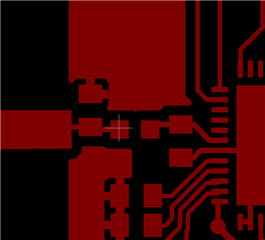Hi There,
I've been developing a product using the NRF52DK. I had some custom PCB's made after I had my circuit designed, and I programmed them with the NRF52DK. Now my boards and the NRF52832 on the DK are running the exact same firmware.
With the NRF52DK, I can connect to my service on NRF Connect for IOS and Desktop (with an NRF51 dongle).
With my boards, I can't see them with IOS (using NRF Connect or LightBlue) but I can see them using NRF Connect Desktop.
When I scan with NRF Connect Desktop, my boards' RSSI indicates a fairly strong signal (~ -55dBm) and I can connect and view/control all the characteristics fine.
I'm going to continue poking around to try to understand what's different but I'm quite stumped as to why IOS will only see the NRF52832 on the DK, but NRF Connect Desktop will see either the DK or the custom board. I've tried an iPhone and an iPad and got the same result.
Any suggestions would be greatly appreciated!
Thanks,
Roger



